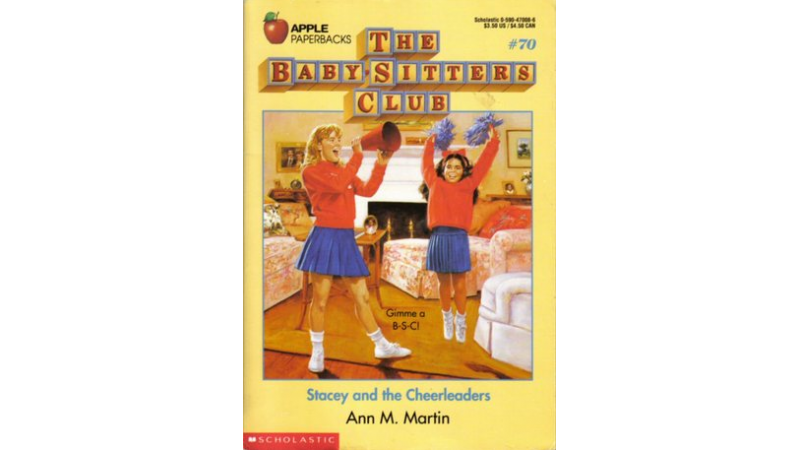 I grew up a dancer and a gymnast, with my parents shuttling me and my sisters back and forth from rehearsals to recitals to competitions. But when competitive dance lost its luster and gymnastics became way too consuming (and expensive), cheerleading was the perfect solution: I didn't have to travel to some special studio four towns away, and I could still dance and flip and perform like I wanted. But there was always a stigma. Being a cheerleader often means having to be on the defense—from accusations of being ditzy, silly, dumb, obsessed with popularity. We ran miles and lifted weights and competed all winter long, but there was no denying being a cheerleader has certain connotations.
I grew up a dancer and a gymnast, with my parents shuttling me and my sisters back and forth from rehearsals to recitals to competitions. But when competitive dance lost its luster and gymnastics became way too consuming (and expensive), cheerleading was the perfect solution: I didn't have to travel to some special studio four towns away, and I could still dance and flip and perform like I wanted. But there was always a stigma. Being a cheerleader often means having to be on the defense—from accusations of being ditzy, silly, dumb, obsessed with popularity. We ran miles and lifted weights and competed all winter long, but there was no denying being a cheerleader has certain connotations.
The thing is, before I was a cheerleader, before I was anything else, I was a reader. And one thing I always hated was how cheerleaders are portrayed in books. Let's be honest: I'm a white girl from a middle class suburb, so it's not like I had many challenges finding myself represented in my reading materials. But despite that privilege, it was hard to find three-dimensional cheerleading characters in the books I read. There was Jessica Wakefield in Sweet Valley High of course, but that character is a bit of a sociopath (love you anyway, Jess!) so I knew better than to seriously consider what her role as a cheerleader said about us as a whole. There was a brief, shining moment where Stacey McGill almost joined the squad in The Baby-sitters Club #70: Stacey and the Cheerleaders, but even there, the squad was portrayed as elitist, jealous girls who couldn't handle someone who might outshine them. And various other kids' books from the 1980s and 1990s and even today make cheerleaders seem…less than. In too many books, "cheerleader" is code for "frivolous."
The library in my hometown is one of those picture-perfect libraries, and old building with hidden corners and ample seating. When my twin sister and I moved up from the kids' room to the teen section, we discovered a whole new set of books that took over our lives, and one of those was the Cheerleaders series by Caroline B. Cooney. They were written in the 1980s, and even when we read them years later they felt a bit dated, but I'll always love them for portraying cheerleaders—and cheerleading—seriously. These characters had it all: smarts, athleticism, insecurities, family troubles, romantic dramas. And they worked hard at their sport. Basically, they were fully realized, fully flawed characters…who just happened to be cheerleaders. Same, too, with the Fear Street Cheerleaders series by R.L. Stine. Those girls competed, trained, tossed each other into sky-high basket tosses…[SPOILER!] and did it all while being hunted by an evil spirit.  The good news is, I've read several books recently that show me that cheerleading in young adult literature has come a long way. Cracked Up to Be by Courtney Summers, for example, has a main character who has just quit the cheerleading team for reasons she can't yet disclose to the reader. Just like Cooney's series, this book is ripe with cheerleader characters who are fully fledged and respected. Another recent book about cheerleading I loved is Dare Me by Megan Abbot, which features an intensely competitive cheer squad, rife with politics, but in a way that feels completely authentic.
The good news is, I've read several books recently that show me that cheerleading in young adult literature has come a long way. Cracked Up to Be by Courtney Summers, for example, has a main character who has just quit the cheerleading team for reasons she can't yet disclose to the reader. Just like Cooney's series, this book is ripe with cheerleader characters who are fully fledged and respected. Another recent book about cheerleading I loved is Dare Me by Megan Abbot, which features an intensely competitive cheer squad, rife with politics, but in a way that feels completely authentic.
This week is National Cheerleading Week, which of course inspired this post, so as I pull out my old copies of Cheerleaders and Fear Street (and my newer copies of Cracked Up to Be and Dare Me), I'm sending up a virtual cheer to all the cheerleader-readers, past and present, out there. We've come a long way.





